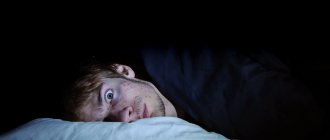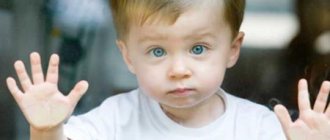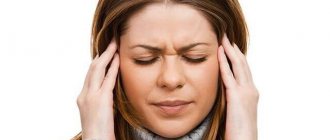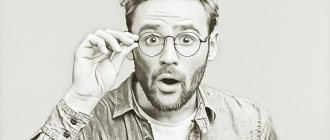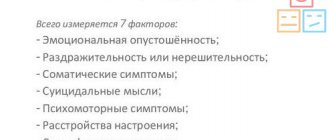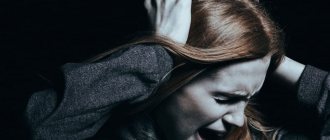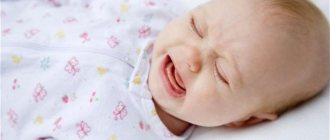11 16 459 0
Quite often, parents attribute a child’s inability to speak at the age of three and a reluctance to make contact with peers and adults to the fact that their child is an individual. However, having heard from the doctor that their child has autism, they cannot come to their senses for a long time, and their child at this time feels psychological discomfort, not understanding the emotions of others.
This disease most often affects infants and has a negative impact on the rest of their lives. It affects the disruption of psychological development, which manifests itself in motor disorders, lack of coherent speech or speech in general. The child is complex, refuses communication in any form, preferring games and spending time exclusively alone. Sometimes the presence of autism is mistakenly called lateness. But that's not true. An autistic child avoids and pushes away from new things, he has a slow reaction to the perception of reality, his movements are monotonous and duplicated.
Forms and degrees of autism in children
Depending on the degree of disorder, a set of measures is determined with the help of which the child is adapted to independence and life in society. The following groups of autism are distinguished:
- The first group
is the most severe degree of the disorder, which is characterized by the child’s complete isolation in his inner world, the absence of any external reactions, facial expressions, and gestures. Such children do not speak and do not respond to their name, and do not react at all to the world around them. Experts make a disappointing diagnosis regarding the adaptation of a child with this degree of autism and his adaptation to life
- The second group
- the child shows fragmentary interest in what is happening around him, can say some words and phrases, but is more fixated on the constant order of things and actions
The child is trying to organize everything around him by laying out his toys.
- The third group
- children establish certain contacts with people and the world, but cannot objectively perceive the situations that arise. They often have conflicts, cannot feel the state of another and do not understand the hidden ambiguity of words. In general, children classified as autism group 3 are quite active.
Children with autism often do not have close, trusting relationships, even with their mother.
- The fourth group
is the mildest form of autism. The child communicates with others, shows interest in various activities and objects, but at the slightest offense or conflict, he withdraws into himself and withdraws. This degree of disorder is most successfully correctable and, after a series of measures, the child almost completely adapts to the social environment
With autism, the child is aggressive and often gets angry if something doesn’t work out.
It is typical that the more severe the degree of autism in a child, the earlier it is possible to identify some deviations in the child and make adjustments.
What is childhood autism
Childhood autism is a disorder that occurs due to abnormalities in brain development.
The disease is characterized by a pronounced comprehensive deficit of communication and social interaction, repetitive actions, and limited interests. All of these signs can be noticed before the age of three. Similar conditions, in which milder manifestations are observed, are classified as autism spectrum disorders.
Simply put, childhood autism is a neurodevelopmental disorder. It is characterized by a variety of symptoms, many of which first appear in infancy or early childhood. Example: inadequate reactions to discomfort, too strong reactions of fear or crying in response to minor changes in the environment or a weak sound stimulus.
A weakened response to feeding position is also characteristic. The reactions of the “revitalization complex” are distorted - an affective readiness for contact with adults is demonstrated. The reaction of animation can manifest itself in the absence of an adult, relating to an inanimate object. In adults, symptoms persist, but in a milder form. It is impossible to determine childhood autism by one symptom.
The diagnosis is characterized by:
- violations in mutual communication;
- lack of social interactions;
- repetitive actions, limited interests.
How to recognize autism in a child? Behavior of a child with autism
In children under one year of age, it is very difficult to identify a disorder such as autism. This is due to the very nature of the disorder: the child’s brain is unable to simultaneously focus on several forms of perception of the world and combine them together, that is, if a child listens to music, he cannot simultaneously look at a toy or perceive a cartoon as a whole image that has both sound and a visual picture.
Since it is not always possible to determine from the behavior of infants whether the child is listening to what is being said or is simply looking at everything around him, the criterion of simultaneous perception cannot help in diagnosing autism.
Preoccupation with an action or object is one of the signs of autism.
Diet for autism
Many parents and attending physicians paid attention to the fact that when maintaining a certain diet, patients with autism felt better. Many autistic people have food allergies, so such patients definitely need to balance their diet and exclude foods that cause allergies from their diet.
Children with autism showed improvement when taking nutritional supplements such as magnesium, B vitamins, and vitamin C.
The diet improves intestinal digestion and absorption of nutrients.
However, it should be remembered that treatment through changes in diet and the use of nutritional supplements must be discussed with your doctor. In order for a child to develop and grow normally, his body must receive all vitamins and nutrients in sufficient quantities.
Signs of autism
Despite the characteristics of an early age, an alert mother will be able to notice some features of the baby’s behavior, which together indicate the presence of autism:
- the baby does not look at faces, does not try to examine features, and shows great interest in toys
- in the presence of a weak third-party sound, the child flinches and gets scared, while in the presence of a more significant sharp noise he remains unperturbed
- the child does not ask to be held by the parents, behaves constrained even in the arms of the mother, or, on the contrary, is too attached to the mother
Sometimes the mother becomes the only person the child allows close to him.
- does not react to people’s movements and does not perceive facial expressions, does not respond with a smile to a smile or shows the opposite reaction (for example, when mom smiles or laughs, he may cry in response)
- the baby begins to make any sounds late, and when he does begin to pronounce certain syllables, he does so without intonation
It is very difficult to diagnose autism in a child under one year old.
If you notice similar manifestations in a child under one year old, do not rush to conclusions. Share your observations with your local pediatrician or neurologist. Perhaps the symptoms you have identified are just an individual characteristic of the child.
Symptoms of the disease
Signs of autism in children can be classified by age:
- Early autism is observed in children from birth to two years of age.
Main symptoms:
- The child does not make eye contact when addressed.
- The child does not smile when in contact with an adult or peer.
- The baby prefers to play alone.
- The baby does not respond when his name is called.
- Childhood autism affects children between 2 and 11 years of age.
The most common signs of autism in this age group of children are as follows:
- The child cannot speak or his speech is incoherent, monotonous, one sound or syllable can be repeated quite often.
- The child does not show a desire to make contact with others; there is a complete disregard for the people around him.
- Autistic children at this age often repeat the same movement and do not like to copy the gestures and facial expressions of peers and adults. They are often attached to one object and painfully part with it.
- Children are afraid of new surroundings and become hysterical when something new appears.
- Such students always lag behind their classmates in academic performance, although they often show talent for drawing or music.
- Adolescent autism affects children 12-18 years old.
Symptoms of the disease are as follows:
- Children prefer being alone.
- Aggression, hysteria during puberty.
- Teenagers have their first experience of communicating with others.
Modern medicine does not have standard treatments for autism in children. Each doctor chooses the method that, in his opinion, is more suitable for a small patient compared to others.
Parents or guardians of the child also need to consider the treatment program proposed by the doctor based on the individual characteristics of the child, because there are cases when a particular treatment method helped one child, but turned out to be completely ineffective for another.
Both parents and children should prepare themselves mentally before starting therapy; this is a complex process that will require a lot of strength and patience. However, with the correct choice of treatment method, as well as conscientious implementation of all its elements, there is a high probability that the disease will be defeated and the child will develop like normal children.
It is also worth considering one fact: the earlier therapy is applied, the greater the chances of a quick recovery.
- Consistency is important for a child. If you have chosen a trainer for your classes, then try to stick to working with this particular trainer as much as possible.
- The use of ABA therapy shows very good results. To begin with, the child is taught to do simple tasks, and for their successful completion they are given a reward (praise, a snack, a toy). For example: wave your hand or nod your head, etc. Gradually, the number of the child’s simplest skills increases, after which it is necessary to learn to apply them in everyday life (while walking, in the store, in the bathroom). When a child knows how to apply primary knowledge, its repetition can be carried out not only by the coach, but also by parents, grandparents, friends, etc.
- Occupational therapy has a fairly good effect. Its essence is that the baby learns to process the information that he receives through the organs of vision, smell, hearing and touch.
- Holding therapy is also practiced to treat autism. It is carried out, as a rule, by the child’s mother through a violent hug. Mom takes her child in her arms, hugs her tightly, pressing her to her chest, and, looking into the eyes, affectionately speaks of her love, tenderness and warmth. During holding therapy, the child must relax, both physically and emotionally. The main essence of this treatment method is to rid the child of his habitual desire to avoid contact with others. The full development of a child is impossible without an established close connection between him and the person closest to him.
- Therapeutic physical education is useful so that the baby learns to control and control his body with the help of a special set of exercises.
Symptoms of autism in children under 3 years of age
At an older age, other indicators appear that are characteristic of autistic children:
- impaired interaction with people and isolation, reluctance to contact others
- focus on one subject
- stereotypical actions (leafing through a book for a long time, turning the light on and off)
- the desire to organize objects into a certain system (the child can lay out toys in a certain sequence, by size or color)
Autistic people prefer solitude
- repetitive movements, strange flapping, bouncing, or spinning in circles
- problems with speech development: the child may not speak at all or speak a few words, using them inappropriately and with incorrect intonation
- tendency to loneliness, phlegmatic
A child’s isolation may be an individual trait.
Each child is individual in his development and some symptoms of autism may not appear, but other behavioral features may appear instead. Experts studying the problem of autism say that three indicators are indicative for diagnosis:
- Lack of desire for social interaction
- Atypical or problematic communication between the child and adults and children
- Limited range of interests and stereotypical actions
The recipe is simple - give yourself completely
Christopher and Rhona Robertson, with whom we began the story, fearfully await the time when their son becomes a teenager. After all, he will face more and more new difficulties. They are very afraid that his condition will regress and are trying to do everything possible to prevent this.
“The problems are already here, and they need to be solved somehow, which is what we are doing,” says Christopher. “We know we have to teach Jamie the social skills he can’t live without.” There is no magic pill, and our formula cannot be said to work for everyone. My only fear is that other parents, having heard all the unpleasant things about autism that we heard, will give up and will not have the strength to fight. I believe that autism can be cured, you just have to give your whole self to the child.”
Is it possible to cure autism?
After the release of the film of the same name, they began to be called “rain people.” They are not like others, not at all like others. Without emotions, without communication, they live on “their own wavelength,” in a mysterious world of images and fantasies. They are not stupid, but it is impossible to understand what kind of intelligence they have, because such people do not make contact. Autists are special people, but how to live with them, how to communicate correctly and how to survive when a doctor pronounces the diagnosis: “Your child has autism...”?! The history of autism begins with legends and fairy tales about lively and cheerful children who were kidnapped by elves, leaving behind children who did not speak and were withdrawn. In 1911, the Swiss psychiatrist E. Bleuler first introduced the term “autism” to describe the clinical picture of a patient withdrawing into a fantasy world. Autism is a mental illness associated with weakening or complete loss of contacts with the surrounding reality, deep immersion in the world of exclusively personal experiences. Such people are called inferior. In the autistic brain, a “failure” occurs during signal transmission, causing distortion of the information received. This leads to problems with communication, the inability to express and realize one’s feelings and emotions in the usual sense. Such people do everything according to a certain routine that only they understand, and as soon as this routine is disrupted, they panic.
Where does this disease come from?
By the middle of the 20th century, the number of scientific works devoted to the topic of autism began to increase literally like an avalanche.
Psychiatrists come to the conclusion that parents are to blame for the occurrence of this disease in children. Only in the mid-70s of the last century, new research in this area convincingly proved the absurdity of this approach. Child psychiatry has begun to take a more balanced and responsible approach to diagnosing childhood autism, taking into account the diversity of forms of this disease. Autists are in some sense unique, and it’s not for nothing that they say about them: these are the people with whom God speaks.
Unfortunately, even modern advances and capabilities of medicine do not allow us to identify the causes of autism. The biological theory is considered the most legitimate; disorders can be caused by one or more biological or genetic factors.
Is autism caused by vaccines?
Autism is a very serious disease, which, according to doctors, is incurable; the development of a sick child can only be partially influenced with the help of psychology and behavioral therapy. However, in the late 80s of the last century, a myth arose that autism appears from vaccination. It originated in the UK: English gastroenterologist Andrew Wakefield and his colleagues published an article stating that administration of the measles, rubella and mumps vaccine (analogous to our DTP vaccine) can cause symptoms associated with autism. A wave of protests against mandatory vaccination swept across European countries: parents preferred to refrain from vaccinations, resulting in hundreds of hospitalizations and 3 deaths. The origin of autism began to be explained very simply - the presence of mercury preparations in vaccines, which are used for preservation. A lot of private clinics have appeared that, for a lot of money, allegedly treated autism with chelation - the use of drugs that can bind and remove heavy metals from the body. Unfortunately, it was not possible to defeat autism in this way; many families spent significant sums on treatment, which, as it turned out very recently, could kill children or cause significant harm to their health (including kidney failure and dehydration). Fortunately, the myth about the connection between vaccinations, autism and the “benefits” of chelation therapy has been completely destroyed: in 2000, 18 large-scale studies were conducted in Europe with the same results: there is no connection between vaccinations and the risk of developing autism in children.
They are different...
Many parents who first encounter the fact that their child suffers from manifestations of autism fall into shock. At first, they console themselves with the hope that everything can be fixed, but over time they realize that this makes no sense. We must learn to live with such a person, understand and accept him, loving him for who he is. Autistic people are unique in a sense, and it’s not for nothing that they are said to be people with whom God speaks. Often, autistic people are much smarter than any professors; they can perform tasks of increased complexity and memorize an amount of information that an ordinary person is not able to learn. Learn to admire such people and understand: autists are no worse or better than us, they are just DIFFERENT. Who knows, maybe the fantasy world of autistic people is much brighter and more interesting than the one in which you and I live...
Reference
In most cases, autism develops in children under 3 years of age. Doctors say that if autism occurs in an adult, it is pure schizophrenia. There are several types of autism, each of which differs in the severity of the disorder and a number of symptoms that affect the life of the patient. For example, people with Asperger's syndrome (autistic psychopathy) do not pay attention to others, but may show great interest in meeting and forming friendships, and they develop a sense of attachment to family members or a close circle of friends. Also, with this syndrome there are no speech anomalies. Autism in Rett syndrome occurs only in girls - in more than 1 case per 10,000. Rett syndrome and early childhood autism (ECA) have a different prognosis: children with autism, with timely appropriate correction, can develop the skills they need over time, children with Rett syndrome vice versa show deterioration in physical and psycho-emotional development.
Autism in children
is a special mental disorder in children, which is explained by disturbances in the functioning of the brain and central nervous system. The term was first used in 1910. This diagnosis is always accompanied by problems with speech development, the child’s socialization in society, and the inability to create contacts and maintain communication. Scientists, observing the development of this disease in children, come to diametrically opposite conclusions both in terms of diagnosis and in explaining the causes of the disease and its treatment.
Diagnosis of autism in children
Making a diagnosis of autism is a complex procedure that requires many studies and tests. In order to diagnose a child suspected of having this severe disorder, a verdict from a commission consisting of:
- pediatrician
- speech therapist
- neurologist
- psychologist
- psychiatrist
Only a series of studies can give the right to make a diagnosis of autism.
In addition, a number of studies are carried out, such as an electroencephalogram, MRI of the brain, Doppler sonography of blood vessels and a number of consultations with specialized specialists.
These measures will not show whether the child is autistic, but they are effective if the child’s odd behavior is caused by other diseases that have nothing to do with autism.
Features of the development of children with autism
Most children diagnosed with autism cannot adapt to independent life and have a low level of intelligence and are significantly delayed in development. But among them there are also children with an average level of mental abilities and even high ones. As a rule, gifted autistic children have talents and unusual abilities - they may be outstanding in mathematics, but in most cases they are unable to independently attend to their needs.
Children with autism can be very capable and intelligent
Some children with this diagnosis develop well, but at a certain point a rapid regression begins, to the point where the child loses most of his skills. After some time, the lost skills return again, but this is a temporary phenomenon.
Manifestations of illnesses in adolescents
As the patient ages, new symptoms appear. For example, many people have difficulty learning. They have poor reading and writing skills. However, some autistic people demonstrate deep knowledge and good abilities in certain disciplines. This could be mathematics, music, fine arts. By the age of 12, children still acquire basic communication skills. But they prefer to be alone. During puberty, patients may experience anxiety.
Often there is a depressed emotional state, outbursts of anger, and increased sexual desire. Seizures are another common occurrence for teens with autism. Is this symptom treatable? Seizures can be controlled with medications. In severe cases, surgery is used. Sometimes seizures go away on their own, without the use of medication.
Teaching and raising a child with autism
Since autism cannot be cured, the main method of combating it can only be correction. Developing basic skills in children with autism is a complex process that requires full dedication from parents. If ordinary children can learn new things by imitating adults, then an autistic child does not try to inherit anyone, because he does not observe the behavior of others. The process of learning even basic everyday skills in children diagnosed with autism involves overcoming the barrier that the child builds around himself and the fears that everything new presents to the child.
The child’s adaptation depends on the parents’ efforts
Another difficulty in raising an autistic child is that once faced with failure, he will not want to repeat the action again, starting to get angry and capricious. It is important for parents to create an atmosphere of success around their child, to show that everything is working out for him, to praise and encourage him.
Try to overcome his fears with your child, tell him about everything unknown and frightening, and he will trust you and actively explore the world with your help.
Other types and methods of treatment
Among other treatment methods Son-Rise technique is distinguished, in which an adult is always next to the child, who, on the contrary, completely repeats the child’s movements and phrases, letting him know that he is an absolutely normal person.
If a child has neurological disorders in the form of panic attacks, anxiety, sudden mood swings, aggression, then medications are used for treatment.
Can autism be cured? It is possible, if by cure we understand a person’s adaptation to the modern world, the development of his abilities, the opportunity to find a job, realize himself, start a family and lead a fulfilling lifestyle. Autists are ordinary, normal people who can succeed in life, but only if their childhood is spent under close training and attention. In fact, one of the parents needs to fully devote himself to the development of the child and the formation of his skills.
Autism in adolescence
Adolescence is the most difficult period in the life of an autistic child. At a time when peers begin to actively establish relationships, communicate with each other and strive to achieve something in life, the autistic person begins to fully feel his difference from others and his own characteristics. This provokes constant stress and nervous tension, which can worsen the problem.
Adolescence is a crisis period for children with autism
An autistic child begins to withdraw into himself even more, reject the world around him or, conversely, strive to achieve more, overcomes his lack of contact and interacts with society.
Features of the speech of patients
It should be noted that many children with this pathology hardly speak until they are 3 years old. Patients can make up words. They also like to copy the speech of others. The child talks about himself in the third person and does not address people by name. When someone tries to talk to an autistic person, they do not respond. Such kids give the impression of being deaf. Delays in development and acquisition of new skills are a feature common to many children with autism. Is there a cure for this disorder? Is it possible to avoid serious consequences? These questions worry parents. Doctors say that a special approach to the education and development of a child, special classes with teachers help correct the manifestations of the disorder.
Rehabilitation of children with autism. Is childhood autism curable?
If your child has been diagnosed with autism, then you should realize this and be patient and persevering, because there is no cure for this condition. Although autism cannot be cured, this does not mean that it does not need to be fought - thanks to correction and the efforts of parents, the child’s condition can be significantly improved and adapted to the social environment.
There is no cure for autism except the care and love of parents
Of great importance in the rehabilitation of an autistic child are physical exercises, certain medications, a special diet, educational games and even classes in a dolphinarium. There are entire programs developed by specialists that are designed to improve the condition of children, make them socially active and teach them how to interact with the world around them.
Parents who are faced with the problem of autism, despite the status of the incurable condition, are calling for a fight against it. Many of them, making every effort, following the instructions of doctors, psychologists, speech therapists, were able to achieve remarkable results, make their little ones social beings, get them out of their shell and fortress of alienation.
The main thing is not to give up and not put up with the diagnosis, but to fight for the child’s health, knock on all doors and look for specialists who will give at least a small chance for improvement.
How does autism manifest in children?
So, what do parents need to pay attention to in order to suspect autism in time? The first signs can be detected in infancy. The baby does not look into the eyes, does not rejoice at the approach of relatives, smiles little, does not strive to be held, and does not like tactile contact. Later he does not respond to his name, does not play with other children, and has a sharply limited range of age-related interests. Such children are withdrawn and difficult to involve in the general process of activities or games. And when the constant routine order of things is violated, outbursts of anger occur.
shutr.bz
Studies were conducted in America, and scientists came to the conclusion that home videos from the first day of birth can classify a child at risk for autism.
The baby practically doesn’t ask any questions, he doesn’t have the typical children’s “Why?”, “Why?”
Such children, already at the age of about a year, show their isolation and indifference to the world around them. After a year, they lag behind in mental development, do not tolerate changes in environment well, and become fixated on one thing. They play not with toys, but, for example, with a piece of clothing, furniture, and so on. They speak poorly or do not speak at all. The baby practically does not ask questions, he does not have the characteristic children’s “Why?”, “Why?”. He may speak words that do not exist or repeat words he has heard over and over again.
Autism comes in varying degrees of severity, from mild to severe, so each child needs an individual approach. Another characteristic feature of autistic children is the presence of talent in one area. Of course, many children have this sign, and this does not mean that they have autism, but if parents are alarmed by something in the child’s behavior, they should definitely consult with specialists.
The question arises: where to go if parents don’t like their child’s behavior? First of all, these are a local pediatrician, a neurologist, a speech therapist and a psychiatrist. There are special tests to detect autism, which can be carried out by a psychologist or child psychiatrist. But for some reason, such a diagnosis is very rarely made in our country, and there is little information on this disease, unlike America and European countries. There they pay a lot of attention to this problem, and the treatment of such children is sponsored by the state.
shutr.bz
Signs of pathology in childhood
There are no typical manifestations of the disease that are characteristic of all patients. Each person, depending on his individual characteristics, is characterized by certain combinations of symptoms. Experts say that autism can be suspected at an early age if the following signs are present:
- The baby does not feel attachment to loved ones, does not cry if mom or dad leave.
- His intellectual development is delayed.
- The child does not strive to communicate with peers. May demonstrate unreasonable cruelty and outbursts of anger. Likes to play alone, avoids peers.
- The baby experiences a strong attachment to certain objects. At the same time, he does not notice other things. For example, he uses one toy, refusing all others.
- Autistic people react painfully to bright lights and loud sounds. He cannot tolerate the noise of a vacuum cleaner or kitchen appliances. For a healthy child, such things seem natural. In an autistic person they cause fear and hysteria.
- The baby does not distinguish animate objects from inanimate things.
- He does not seek to maintain physical contact, does not ask to be held, and does not like touching.
Having discovered such manifestations in their son or daughter, parents turn to specialists. Can autism in children be treated or not? This problem worries many today.
Treatment of autism
Most often, the diagnosis of autism is made at the age of 2-3 years. It has been proven that treatment that is started early leads to great positive changes. Effective behavioral therapy for up to three years is aimed at developing speech function and has good results. It is also very important to educate the family in which the child lives, because the main pastime takes place in the home. Close people - first of all, mom and dad - should create conditions for the child and allocate more time for joint activities and communication.
Behavioral and music therapy, dolphin therapy, canistherapy (communication of children with specially trained dogs), hippotherapy (communication with horses) have a beneficial effect. However, it is currently impossible to completely cure a child from autism. In the USA, various treatment methods have been developed, but there is no evidence base for their effectiveness.
Music therapy, dolphin therapy, canistherapy, hippotherapy have a beneficial effect on autistic children
Special programs and activities for autistic children allow them to adapt quite normally in society. Such children can serve themselves in the future and even study and work. Specialists teach the mother all the necessary techniques, and she herself can study with the child at home for 5-7 hours a day.
Unfortunately, in Ukraine there is no state program to support autistic children, and special rehabilitation centers that work only on the enthusiasm of parents can be counted on one hand, so there has been no success in the treatment of autism in our country. The forecasts are also sad because many parents, faced with autism in their child, do not take any action. But if you tackle this disease closely at an early age, the results can be very good.
shutr.bz
The question of whether autism can be treated is asked every day by hundreds of parents whose children have been given this serious diagnosis. Autism is a complex disease that affects the neurological and mental development of a child. As a result of this condition, the child completely loses the ability to socially adapt.
This disease is still poorly understood. However, it continues to attract a lot of attention, even despite the sufficient amount of information about it. At the moment, separate concepts for the treatment of autism have been developed, which they are trying to adhere to around the world.
Features of autism
In order to correctly prescribe treatment for autism, you first need to understand the principles of the disease itself, as well as the reasons that lead to its occurrence.
Autism is a congenital pervasive neurodevelopmental disorder. It is characterized by a violation of the child’s ability to interact with the world and people around him (violation of the ability to socially adapt), the emergence of cyclical actions, so-called rituals. This disease manifests itself in a child from an early age and is most often initially identified by parents who notice his lack of interest in the world around him, as well as various symptoms indicating a delay in nervous and mental development.
According to parents, such children are “in their own shell”, withdrawn into themselves and practically do not react to the world around them. They find it much easier to be alone than with other people, whom autistic children usually perceive as unpleasant irritants.
Return to contents
Interaction problems
Autistic people are fearful and timid. They don’t know how to play with peers or make friends. Such children are not able to learn norms of behavior. They don't like it when someone bothers them. If another child approaches an autistic child and tries to establish communication, he may run away and hide. In addition, the patient is prone to attacks of anger. The patient directs aggression towards himself or others. Children with this disorder are afraid of change. If you move furniture, rearrange books, or throw away a broken toy, an autistic person will react violently to this. Another feature of such patients is undeveloped abstract thinking. They can only repeat what they have heard or seen. These babies make strange movements (swinging, jumping, shaking their arms, twirling their fingers). This behavior makes it difficult to stay in society. Social adaptation is a problem that worries parents of patients with autism. Are such disorders treated? Will the child be able to live normally in society?
Parents often ask these questions to specialists. Unfortunately, there are no medications that would allow autistic people to communicate adequately. However, there are techniques that can correct behavioral disorders and help the child interact better with others.
Causes of autism
Recently, it is increasingly believed that the cause of autism is not so much a psychogenetic effect, but rather a number of different biological factors. The following signs support the biological theory of triggering:
- The innate nature of autism. It manifests itself already from infancy, in contrast to psychogenic diseases.
- The relationship between the onset of autism and maternal infections during pregnancy (for example, rubella).
Biological factors that are more likely than others to cause the development of autism include:
- Hereditary factors. Thanks to individual studies, it was possible to establish the role of heredity in the development of autism. In addition, recent molecular studies have already been able to identify individual sections of the genetic code that may be responsible for the occurrence of autism.
- Deviations in biochemical processes in brain tissue. There is evidence that abnormalities in the production of substances responsible for transmitting nerve impulses can also lead to the development of autism.
- Damage and disruption of the proper functioning of brain structures. Many patients with autism have been found to have underlying problems either in the structure of the brain or in its functioning.
- Disturbances in emotional, cognitive and speech development. Such factors may explain the behavioral characteristics of an autistic child, since his inability to establish social contacts with other people can be explained by the initial (innate) characteristics of perception.
Return to contents
Causes of the disease
To date, experts have not been able to establish what factors contribute to its development. There are several hypotheses about why the disease appears. For example, some scientists believe that autism occurs in children who grow up in certain environmental conditions. For example, a mother who is harsh and suppressive or suffers from depression is unable to create conditions for the normal upbringing of an infant. As a result, the baby develops developmental and behavioral disorders.
Another hypothesis is based on genetic predisposition. It was never confirmed.
Some experts suggest that the pathology develops as a result of the influence of factors such as infection or intoxication of the mother’s body during gestation or difficult delivery. There is another hypothesis that has appeared recently. It lies in the fact that signs of the disease appear in a child after vaccination. Research has shown that this theory is not true. In addition, refusing vaccinations negatively affects the baby's health. Today, many children are diagnosed with autism. Is this disease curable or not? How to recognize it in time? These questions concern parents of patients.

